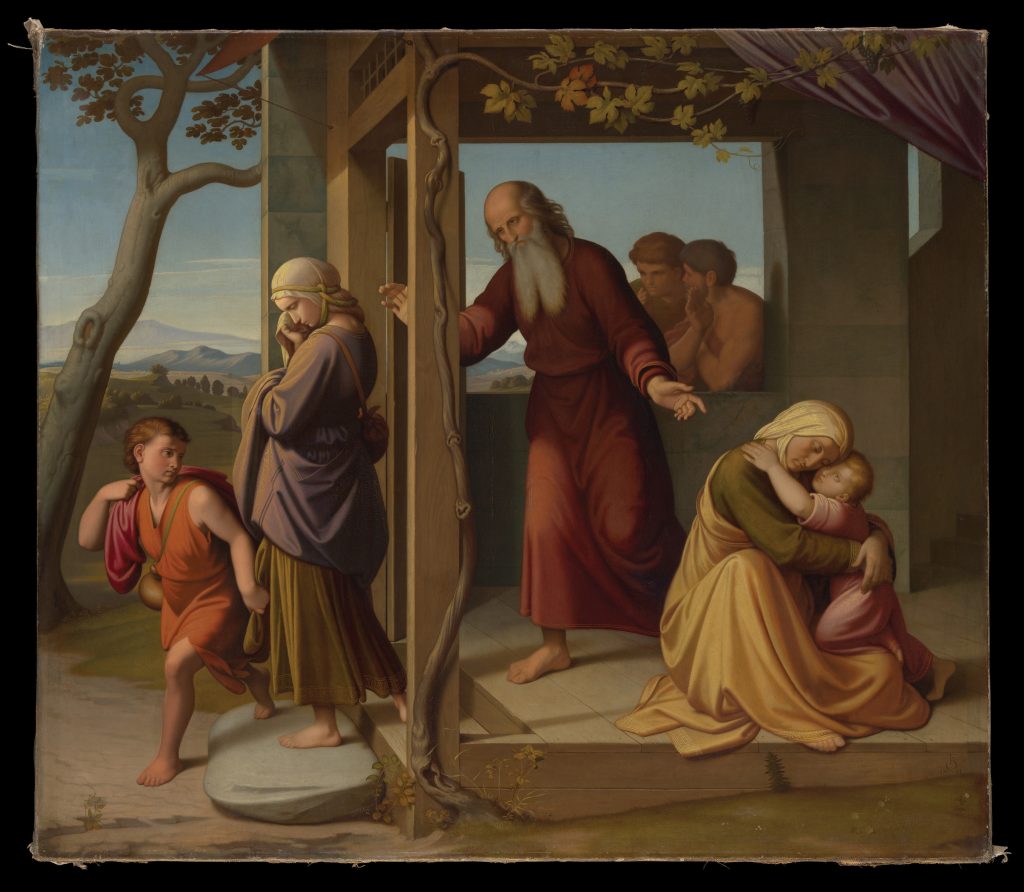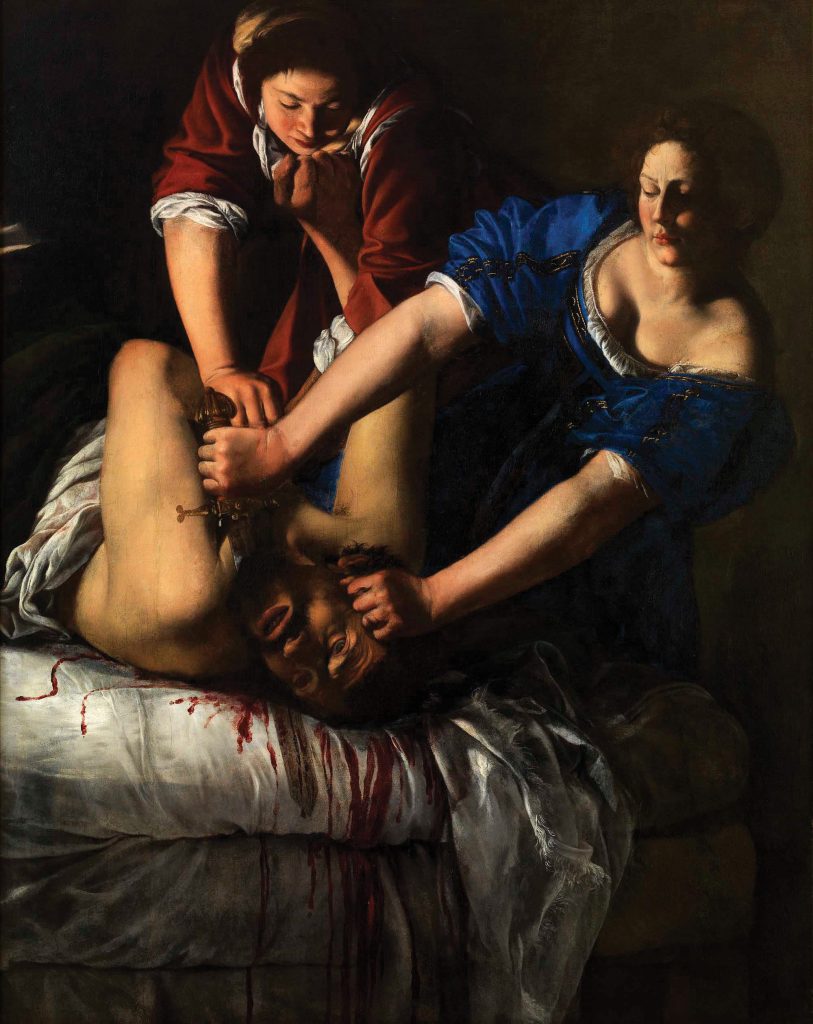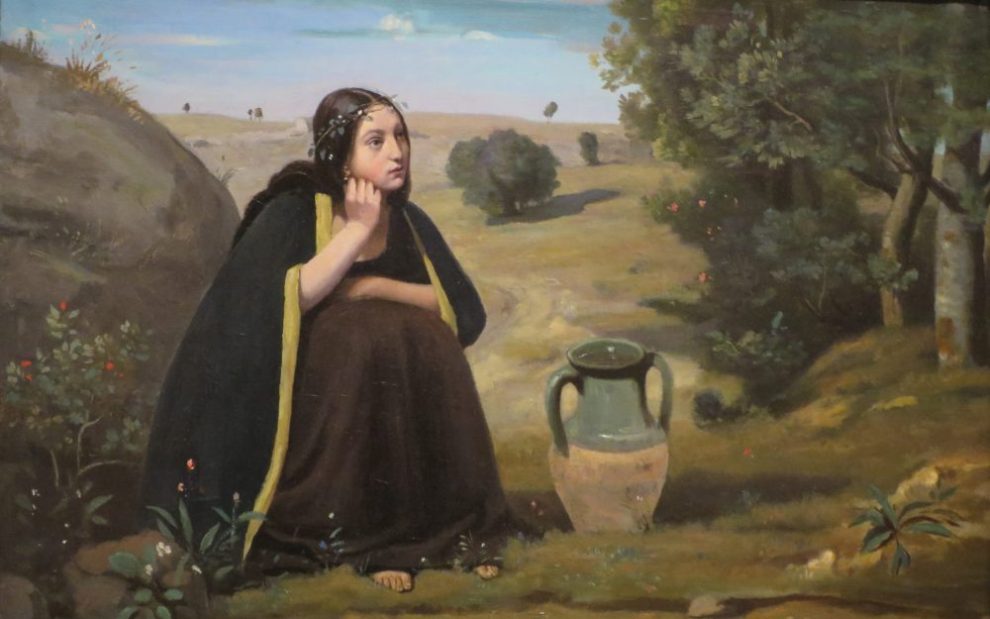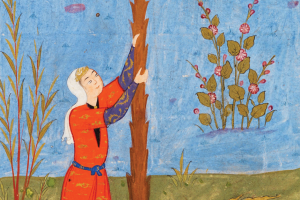A popular diagram among conservative Christians depicts a stack of open umbrellas. The biggest one, sheltering the others, is labeled “God.” The next is “husband,” then “wife,” and finally “children” are represented by the smallest open umbrella, under all the rest.
The image was originally made by Bill Gothard, founder of the Institute in Basic Life Principles, a fundamentalist Christian organization, although its reach has traveled far beyond Gothard’s movement. He intended to represent a hierarchical family structure and highlight the idea that when families submit to this structure—the wife above the children, the husband above the wife, God above the entire family—they experience special protection.
Beyond the blatant theological errors—the idea that women don’t have direct access to God and that it must be mediated through their husbands, for example—the image makes no sense. The top umbrella shelters the rest, so what’s the point of having a whole stack? Yet it reflects a deep and pervasive idea that shows up in much of Christian thought, including in some Catholic circles: that women owe obedience to men as mediators of divine will.
People promoting these ideas cite New Testament injunctions such as those admonishing women to “be subject to their husbands as to the Lord” (Eph. 5:22). (Such interpretations often leave out the following verses, where men are enjoined to love their wives “just as Christ loved the church and gave himself up for her”—in other words, to die for them.)
Church fathers echo these misinterpretations. Irenaeus, in the second century C.E., writes that “both nature and the law place the woman in a subordinate condition to the man.” Augustine, in On the Trinity, speculates that women bear the image of God only when united with their husbands: “When she is referred separately to her quality of help-meet, which regards the woman herself alone, then she is not the image of God.”
Meanwhile, St. John Chrysostom, in his homily on Ephesians, praises the women of the Bible as exemplars of meekness:
“Hearken about the women of old; they were great characters, great women and admirable; such were Sarah, Rebekah, Rachel, Deborah, and Hannah; and such there were also in the days of Christ. Yet did they in no case outstrip the men, but occupied the second rank.”
And yes, certainly the Bible is filled with admirable women. But docile subservience is conspicuously absent from their stories. The holy women of scripture were anything but submissive. They were wives and mothers, yes, but also prophets, queens, and judges. We see them laughing at angels, deceiving their husbands, leading armies, and killing generals. Perhaps it is time to develop a new biblical understanding of womanhood based on the actual women of the Bible.
Lives of precarity and danger
The Hebrew Bible matriarchs did not have easy lives. St. John Chrysostom is correct that they occupied “second rank,” but it was due not to divine will but to male dominance. These women endured not only the ordinary perils of a nomadic existence but also the assaults and indignities of a society that treated them as property.
The best-known story about Sarah, wife of Abraham and mother of Isaac, recounts how, overhearing the angel’s promise that she will bear a son, she laughs out loud, knowing she’s too old to get pregnant. When the angel confronts her, she denies laughing. Their exchange is comical but portrays her as a woman on her guard, cynical, even bitter.
The events leading up to this exchange are disturbing. Earlier in the story, realizing she and Abraham are unlikely to have children, Sarah insists he have sex with Hagar, her enslaved maidservant—an arrangement that inspired the details in Margaret Atwood’s The Handmaid’s Tale. Once pregnant, Hagar treats Sarah with contempt, and Sarah retaliates by bullying her. After Isaac’s birth, Sarah has Abraham send Hagar and her son into the desert. Divine intervention, not any remorse on the part of Sarah or Abraham, eventually saves them.
Sarah’s behavior, though shocking, should be seen in light of the traumas she experienced. In two separate stories, Abraham buys his safety by handing Sarah to strangers. In Egypt, he fears men will covet his wife and kill him. “Say you are my sister,” he tells her, “so that it may go well with me because of you and that my life may be spared on your account” (Gen. 12:13). As a result, Pharaoh “takes Sarah into his house,” an act of sexual violence in which her husband is complicit and for which he receives great wealth.
This is the first of three Genesis stories known as the “wife-sister stories.” The second is in Genesis 20, when Abraham hands Sarah over to King Abimelech. In Genesis 26, Isaac similarly lies about his wife, Rebekah—to the same king. And sandwiched between these accounts is the story of Lot offering his daughters to a mob.
How precarious these women’s lives were. Nothing about Sarah’s story conveys the docile tranquility of a sheltered wife. She treats Hagar horribly, yes, but her survival depends on being able to bear a child and on her husband’s continued protection—such as it is.
The woman who claims her dignity
The commentary from the Genesis Rabbah (a collection of rabbinical interpretations of Genesis) focuses on Sarah’s experiences in these wife-sister stories. One commenter describes her as lying prostrate all night, crying to God for help. Another envisions her controlling the plagues that eventually strike Pharoah and his household in Genesis 12: “The whole of that night an angel stood with a whip in his hand; when she ordered, ‘Strike,’ he struck, and when she ordered, ‘Desist,’ he desisted.”
Rabbi Rachel Adelman, writing on the wife-sister narratives, notes that when King Abimelech returns Sarah to Abraham, he assures her that “you are completely vindicated” and suggests Sarah must have rebuked the king in defense of her own dignity and personhood. Adelman suggests Sarah as a model for oppressed people today.
While Sarah hardly comes off as a woman to imitate, this rabbinical interpretation opens a different perspective of her life. Sarah, the first matriarch, advocates for herself and sets a precedent for the marginalized.
Daring to own herself
When the time comes for his son Isaac to marry, Abraham sends a servant to seek a wife from among his own people. The servant meets Rebekah by a well—a motif in Hebrew Bible narratives. From the start, Rebekah has more agency than Sarah. Offered the option of staying with her family or going to her new husband, she immediately decides to go meet him. When she sees Isaac approaching, she dismounts from her camel and veils herself.
This shouldn’t be taken as a sign of docile submissiveness. In a reflection for the Jewish Theological Seminary, Rabbi Lauren Eichler Berkun points out that by veiling herself before she meets Isaac, Rebekah is asserting her independence: “[Rebekah] veils herself as if to say, ‘I will give myself to you, but there will always be a part of myself that is separate and distinct from you.’ ”
Of the four Hebrew Bible matriarchs, Rebekah is the only one who remains monogamous with her husband. Independent, decisive, and deceptive, Rebekah is a difficult figure to shoehorn into any thesis about meek biblical women. Some Christian commenters have even pointed to her as a warning of how women shouldn’t act.
Like Sarah, Rebekah has difficulty getting pregnant—another Hebrew Bible motif, indicating that these births are connected with divine intervention—but finally bears twins, Esau and Jacob. As their sons grow older, Rebekah and Isaac pick favorites, with Rebekah preferring the younger son, Jacob. Like his mother, Jacob is a schemer, and he manages to get his brother to sell him his birthright. Later, Rebekah helps him deceive his father and get the paternal blessing intended for Esau.
Such dysfunctional dynamics undercut the popular Christian notion that imitating Bible characters is a path to righteousness. It’s not healthy to pick favorites, and while women sometimes have to deceive their husbands for the sake of their or their children’s safety, it’s hardly an ideal.

Deceptive women advance God’s plan
Rebekah’s story is not a cautionary tale about the wiles of women, however. Despite the many scriptural warning against deception, trickery in the Bible repeatedly advances God’s plan, perhaps because it is a survival technique for those who are oppressed. As writer Richard Beck points out in a blog post:
Deception and subterfuge are often the only weapons available to the oppressed and marginalized. Consequently, in Genesis we often see deception and subterfuge rewarded when used by the weaker against the stronger. Deception is found to be virtuous in the story when it is used to interrupt the powerful.
Craftiness runs in Rebekah’s family. Her brother Laban later tricks Jacob into marrying his older daughter, Leah, in place of his younger daughter, Rachel. Jacob ends up marrying both sisters, but his contention with his father-in-law continues until he decides to move on with his wives and herds.
Rachel, while packing to leave, steals Laban’s teraphim (sometimes translated as “household gods”). Laban, catching up with Jacob, demands to know who stole the teraphim. Unaware of Rachel’s theft, Jacob promises to execute the culprit. But Rachel hides the teraphim in a camel saddle and sits on it. When Laban enters her tent, she apologizes for not rising, telling him she’s having her period. Since menstrual blood was considered unclean, Laban can’t touch his daughter without being defiled.
As Mary Jo Bowman points out in a reflection for Eastern Mennonite Seminary, “Rachel’s use of deception makes a statement about feminine power amidst a larger drama of deception and counter-deception in which the men are the main tricksters.”
If deception is the weapon of the oppressed and God works through the lowly, female trickery is a locus of divine grace and blessing. The women tricksters of scripture should be read not as moral warnings but as figures of creative endurance.
Chosen family
The women in the Bible often advance God’s plan by defying, not conforming to, cultural convention. Take Ruth, the great-grandmother of King David and one of four women named in Jesus’ genealogy in Matthew. While contemporary Christian culture often treats the story of Ruth as a romance, the central relationship in the story is between Ruth and her mother-in-law, Naomi.
An Israelite woman living in Moab, Naomi has lost her husband and sons. Grief-stricken, she decides to return to her people and advises her daughters-in-law to find new husbands. One woman does as she’s told, but the other, Ruth, refuses. “Do not press me to leave you, to turn back from following you!” she says. “Where you go, I will go; where you lodge, I will lodge; your people shall be my people and your God my God” (Ruth 1:16). This verse is frequently used in weddings, yet Ruth speaks it while rejecting marriage, rejecting the entire tradition she was raised in.
The women settle in Judah, where Ruth begins gleaning in the fields of Boaz, a wealthy landowner and Naomi’s kinsman. Understanding her circumstances, Boaz instructs his harvesters to leave extra grain for her and to keep her safe as she works.
Naomi, hearing of this, concocts a plan to marry Ruth to Boaz, telling her to bathe and perfume herself, put on her best clothes, and go to the threshing floor by night and lie down at Boaz’s feet. Is Naomi setting up a sexual encounter? Maybe. The passage is rife with erotic suggestiveness, including the reference to Boaz’s feet, often assumed to be a euphemism for male genitals. Knowing Boaz is honorable, however, Naomi is sure he will offer marriage and respect Ruth’s reputation. And Ruth has learned to trust Naomi.
Ruth’s relationship with Naomi is an example of the “chosen family” motif popular among those who have distanced themselves from difficult families of origin. As scholar Phyllis Trible points out in an article for the Jewish Women’s Archive, Ruth “reverses sexual allegiance. A young woman commits herself to an old woman in a world where life depends upon men.”
Both traditionalist Christians and feminist critics misread Ruth when they portray her as a pliable handmaid of the patriarchy. Ruth is no helpless maiden. She leaves her home and lives as an immigrant in a strange land, boldly forging a new identity. She places her trust not in male authorities but in a wise older woman.
In agreeing to Naomi’s plan, Ruth also reverses the traditional order of courtship, essentially proposing marriage to Boaz. And Boaz says, “I will do for you all that you ask.” The women are calling the shots. This theme of female sexual agency
stands in contrast to the motif of misogynistic violence in scripture.
Holy disobedience
A few generations after Ruth, the story of Abigail in 1 Samuel challenges the idea that women owe their husbands obedience. Described as “clever and beautiful,” Abigail is married to a wealthy, surly man named Nabal during the time of the feud between the rising leader David and the mentally ill King Saul. David, on the run from Saul, sends messengers to Nabal asking for provisions and reminding him that he protected Nabal’s herdsmen in the past. Nabal responds by insulting the messengers, and the enraged David prepares to take what he wants by force.
Abigail realizes that her people are in danger. She sets out with a donkey train loaded with food and, meeting David’s army, begs for mercy, prophesying his kingship and mocking her own husband: “My lord, do not take seriously this ill-natured fellow, Nabal” (1 Sam. 25:25).
David, impressed by her courage, declares that God sent her to prevent him from making a rash mistake: “Blessed be your good sense,” he says. Nabal is at home, drunk. When he sobers up and his wife tells him what she did, he becomes terrified. Ten days later he dies, and David sends for Abigail and makes her his wife.
The Talmud regards Abigail as a prophet. In The Pleasure of Her Text (Trinity Press), Alice Bach notes that Abigail “emerges as a redeemer whose action and prophecy are necessary in assuring the future role of David, the divinely chosen monarch of Israel.”
Nabal may think Abigail owes him respect and obedience by virtue of their relationship. But Abigail will not respect a man she knows to be foolish and cowardly. Most likely, this was an arranged marriage, and one can imagine Abigail’s unhappy life with a spiteful, ungenerous drunk. Perhaps, when she goes behind his back to protect her people, she is also scheming to switch her allegiance to a man she can respect. By traditionalist standards, Abigail is transgressive, even dangerous. Yet her disobedience to Nabal is presented as noble and salvific.
Abigail is not part of any significant genealogy for either the Jewish or the Christian traditions. Her function in the story is less about her ability to reproduce and more about her character and influence on David. As Bach writes, she “helps David set limits to his fury.” Given David’s errors later in his career, maybe he should have let Abigail influence him more frequently.
Saviors of their people
Other biblical women are remembered as saviors of their people. There’s the prophet Deborah, who serves as the judge of Israel and leads an army. She prophesies that God will deliver their enemy, Sisera, into the hands of a woman. That woman is Jael, who lures Sisera into her tent and, while he sleeps, drives a tent peg into his head. Not exactly feminine docility. Later there’s Queen Esther, wife of the Persian king Ahasuerus, who risks her life to save her people from her husband’s vindictive vizier, Haman.
The best-known woman savior in the Bible may be Judith. Like Jael, Judith saves her people by dispatching an invading general. In Judith’s case, however, her act is premeditated. A wealthy, independent widow renowned for her beauty and devoutness, Judith learns that the Judean leaders are planning to surrender to the Assyrian army. After lecturing them for their failure of faith, she tells them, “I am about to do something that will go down through all generations of our people” (Jth. 8:32).
Judith goes home and prays for assistance, asking God to help her lie effectively—that her “deceitful words” may bring destruction on her enemies. Then she dresses in all her finery, “to entice the eyes of all the men who might see her” (10:4), and sets out with her maid to the Assyrian camp. Pretending to be a defector, she wins the trust of their general, Holofernes, who invites Judith to his tent, planning on seducing her. But he drinks too much and passes out. (In the Hebrew Bible, men who drink themselves into a stupor rarely end well).

With the help of her servant, Judith decapitates Holofernes with his own sword, pops his head into her food basket, and departs coolly from the camp. Once the Assyrians realize what has happened, they panic. The Judeans are saved. Judith leads them in a psalm of deliverance later echoed in Mary’s Magnificat, a song of praise to God who overpowers the oppressor.
After the war, Judith lives to an old age with great renown, and though many men court her, she remains single. This heroine defies nearly every traditionalist norm. She lives alone, has no children, lectures men, dresses seductively, engages in trickery, and commits an act of bloody violence. Yet her people regard her with reverence.
In the Hebrew tradition, the book of Judith is treated as historical fiction, possibly inspired by the story of Jael but written too late to be canonical. The Protestant tradition follows this. The Catholic tradition, however, treats the book as historical.
Judith has remained a popular figure, taking on multiple allegorical layers. In the Middle Ages, she became a type of Mary, her vanquishing of Holofernes representing triumph over sin. Later, during the Protestant Reformation, the Jewish heroine became an image of Catholic orthodoxy triumphing over Protestant heresy.
Today, Judith is something of a feminist icon. Of the many artistic depictions of her, the best-known is by Renaissance painter Artemisia Gentilischi. Both a rape survivor and a woman in a male-dominated field, Gentilischi’s portrayal of Judith emphasizes her agency and stands as an emblem of feminist empowerment against rape culture.
Agents and allies
While it’s important to read these stories in their original contexts, there’s also value in relating them to contemporary challenges women face in the church and broader world. Some things haven’t changed since Abraham tried to buy his safety with his wife’s body. Patriarchal cultures still dehumanize women, pitting woman against woman. When religious leaders weaponize the stories of biblical women and misrepresent them as paragons of docility and meekness, this is just another chapter in the long saga of denying women’s agency.
Yet that saga is not part of God’s plan. The patriarchal hierarchy, despite its deep roots in tradition, is the opposite of the Christian vision for humanity that emphasizes the dignity of all people. Female subservience does not glorify God. What it does do is make things easier for predatory men. It’s worth noting that Bill Gothard, originator of the umbrella diagram, was later accused of sexual harassment and molestation by 34 women, some of whom were minors when the alleged incidents occurred.
The women of the Hebrew Bible opposed oppressors and advocated for themselves. They subvert patriarchal expectations about idealized female behavior. Yes, some of their actions are morally questionable by modern standards, but the same could be said about the actions of biblical men.
Women today, especially those who are outcast, isolated, or in danger, can look to these biblical heroines as inspirations for holy defiance in the face of oppression. And they can take comfort knowing that, when in need of comfort or guidance or strength, they can appeal to God directly—no intermediary needed.
This article also appears in the May 2025 issue of U.S. Catholic (Vol. 90, No. 5, pages 30-35). Click here to subscribe to the magazine.
Images: Wikimedia Commons












Add comment